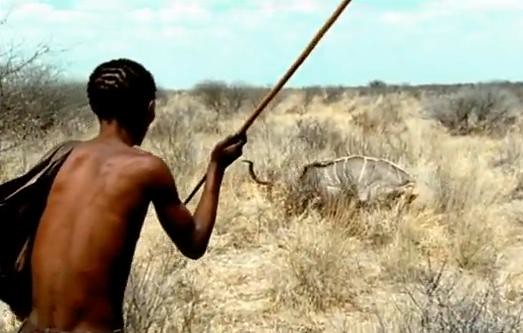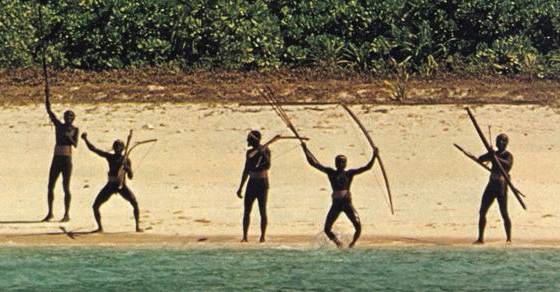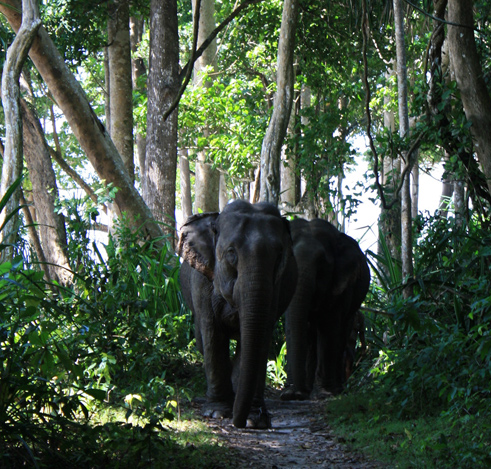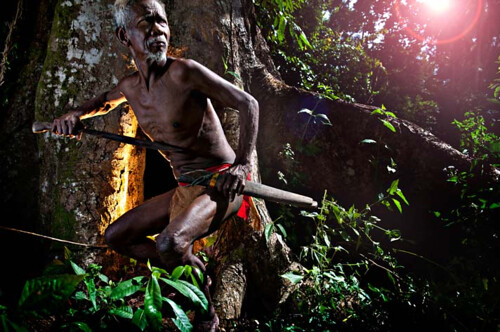Different types of Societies around the world
Horticultural Societies
In a green society, hand instruments are utilized to harvests.
The principal green social orders jumped up around 10,000– 12,000 years back in
the most fruitful zones of the Middle East, Latin America, and Asia. The
apparatuses they utilized were straightforward: sticks or cultivator like
instruments used to punch openings in the ground with the goal that products
could be planted. With the approach of green apparatus, individuals never again
needed to rely upon the social occasion of palatable plants—they could now
develop their own sustenance. They never again needed to leave a region when
the nourishment supply was depleted, as they could remain in one place until
the point when the dirt was exhausted.
Pastoral
Societies

A peaceful Pastoral society depends on the training and
reproducing of creatures for nourishment. Some geographic locales, for example,
the leave areas of North Africa, can't bolster crops, so these social orders
figured out how to tame and breed creatures. The individuals from a peaceful
Pastoral society must move just when the brushing land stops to be usable.
Numerous peaceful Pastoral social orders still exist in Africa, Latin America,
and parts of Asia.
Primitive Culture:
Primitive Culture, in the vocabulary of early anthropologists, any of
various social orders described by highlights that may incorporate absence of a
composed dialect, relative segregation, little populace, moderately basic
social foundations and innovation, and a for the most part moderate rate of
sociocultural change. In a portion of these societies history and convictions
are gone on through an oral custom and might be the territory of a man or
gathering particularly prepared for the reason. Culture is examined in various
different articles.
Job
Specialization
As strategies for raising yields and training and
reproducing creatures enhanced, social orders started to deliver more
nourishment than they required. Social orders additionally ended up bigger and
all the more for all time attached to one area. Without precedent for mankind's
history, not every person was occupied with the social occasion or creation of
nourishment. Thus, work specialization rose. While a few people cultivated or
raised creatures, others delivered makes, wound up associated with exchange, or
gave such products as cultivating devices or attire.
Agricultural
Societies
The creation of the furrow amid the plant and peaceful
social orders is viewed as the second social transformation, and it prompted
the foundation of farming social orders around five thousand to six thousand
years prior. Individuals from a rural or agrariansociety tend yields with a
creature saddled to a furrow. The utilization of creatures to pull a furrow in
the long run prompted the formation of urban communities and framed the
fundamental structure of most present day social orders.
The advancement of agrarian social orders took after this
general arrangement:
·
Creatures are utilized to pull furrows.
·
Bigger territories of land would then be able to
be developed.
·
As the dirt is circulated air through amid
furrowing, it yields more harvests for longer timeframes.
·
Efficiency increments, and insofar as there is a
lot of nourishment, individuals don't need to move.
·
Towns frame, and afterward urban areas.
·
As product yields are high, it is not any more
vital for each individual from the general public to participate in some type
of cultivating, so a few people start creating different aptitudes. Occupation
specialization increments.
·
Less individuals are specifically required with
the creation of nourishment, and the economy turns out to be more
unpredictable.
·
Around this same time, the wheel was concocted,
alongside composing, numbers, and what we would today call expressions of the
human experience. In any case, the development of the steam motor—the third
social upheaval—was what took people from horticultural to mechanical society.
Amazing
Hunter-Gatherer Societies around the world:
Before the change in farming industries, individuals
invested more energy in this planet as seeker gatherers, depending without
anyone else survival senses to support themselves. The approach of cultivating
changed the greater part of that. With the expanding contact seeker gathering
social orders had with ranchers and herders, seeker gatherer populaces diminished
in clearing numbers over the span of history.
Some conjecture that before this present century's over, the
last chasing and assembling social orders will vanish, taking with them an
"imperative connect to our past". Fantastically, here are a portion
of the couple of clans that have figured out how to keep up a lot of their
autonomy as seeker gatherers.
Kalahari Persistence
Hunters

Kalahari bushmen of the Kalahari Desert of Africa utilize
one of the most established types of chasing known to man, constancy chasing.
Before firearms, before blades, before weapons, we utilized our bodies to
chase. All the more particularly, we pursued our prey until the point that it
crumbled. These days, this technique would presumably not be prescribed in a
seeker security course. Kalahari seekers pursue their prey (regularly a kudu
i.e. eland) for 2 to 5 hours more than 25 to 35 km in temperatures of around 40
to 42°C (104 to 107°F). People really utilize substantially less vitality to
build speed than generally creature. Their sweat likewise helps keep the
sprinters cool, though the creature must take a rest and discover water, the
perfect time for the Kalahari to go for the kill, skewering the brute at short
proximity. Diligence chasing is thought to have been one of the soonest types
of human chasing, having advanced 2 million years prior.
Spinifex of the Great Victoria Desert
The People of Spinifex or Pila Nguru (which means "home
areas in the valleys between sandhills") lead a conventional hunter
gatherer presence in the Great Victoria Desert, arranged in Western Australian.
A great part of the data with respect to this indigenous gathering has remained
broadly obscure before 1910-1930. This was around the time preachers had
started attacking their territory.
At that point in 1952, the British started testing the nuclear
bomb just 300 km far from their area. At the point when the Brits acknowledged
individuals lived there, they sent an accomplished bushman named Walter
MacDougall to caution the Spinifex of the testing going on. Given he was one
man responsible for getting the message out over an exceptionally huge land,
MacDougall definitely didn't have the opportunity to caution everybody.

The majority of the Spinifex were moved from their countries
to missions at Cundeelee and Warburton (around 65km east of Melbourne) yet some
still stayed to proceed with the seeker gatherer custom.
It wouldn't be until the year 2000 that the Spinifex
individuals would turn into the second clan to be agreed their Native Title
arrive rights over a part of land enveloping 55,000 km2.
Sentinelese of the
Andaman Islands

The Sentinelese harp on the Andaman Islands in
the Bay of Bengal amongst India and the west of Burma. They are accepted to be
one of the last Stone Age clans on the planet to keep up their autonomous
presence and are wild about shielding their domain. The Sentinelese are the
main seeker gatherers who oppose finish contact with the outside world.
In 1974, when a movie group endeavored to reach
the Sentinelese, leaving endowments of nourishment and a few pots and
container, one of the islanders shot the movie chief in the thigh with a bolt.
After a year when travelers started nearing the region, they were repulsed with
Sentinelese bolts.
A 2004 Telegraph article detailed how two tipsy angler strayed on to their island and were instantly slaughtered by the tenants.
Their bodies are still there: the coastguard helicopter that went to gather them was dragged away with a "shower of bolts" being terminated from the Sentinelese. From the little we think about this individuals, the individuals who have had the opportunity to watch their traditions have announced that their fundamental weaponry comprises of spears, and a flatbow and no less than 3 assortments of bolts. One write for angling, one for chasing, and one "untipped" one utilized for shooting cautioning shots.

A 2004 Telegraph article detailed how two tipsy angler strayed on to their island and were instantly slaughtered by the tenants.
Their bodies are still there: the coastguard helicopter that went to gather them was dragged away with a "shower of bolts" being terminated from the Sentinelese. From the little we think about this individuals, the individuals who have had the opportunity to watch their traditions have announced that their fundamental weaponry comprises of spears, and a flat-bow and no less than 3 assortments of bolts. One write for angling, one for chasing, and one "unequipped" one utilized for shooting cautioning shots.
As per the 2001 Census of India, authorities recorded just 39 people in the clan (21 guys and 18 females), however a few checks have said it could be anyplace between 40-500. DNA investigation of another clan, the Jarawa, whose individuals reached the outside world in 1997, recommend that the tribesmen relocated from Africa around 60,000 years back.
Pirahã of the Maici
River in the Amazon:
The Pirahã individuals are an indigenous Amazonian hunter and
gatherer clan who live predominantly on the banks of Brazil's Maici River. As
per the Survival International Organization, Brazil's Amazon is home to more
uncontacted clans than anyplace else on the planet.
Anthropological etymologist, Daniel Everett, is one of the
main specialists on Amazonian dialects who had the chance to live in the Pirahã
town and concentrate the clan's traditions. He comments on the Pirahã's very
creative nature:
"The Pirahã are remarkably talented in all the routes
important to protect guarantee their proceeded with survival in the wilderness:
they know the convenience and area of terrifically vital plants in their
general vicinity; they comprehend the conduct of nearby creatures and how to
get and maintain a strategic distance from them; and they can stroll into the
wilderness stripped, without any instruments or weapons, and exit three days
after the fact with bushels of natural product, nuts, and little
amusement."
Despite the fact that the Pirahã do have some contact with
the outside world, it is insignificant. They do deal with outer brokers yet
generally have opposed most outside impacts (most prominently, horticulture and
cultivating) holding a seeker gatherer way of life. They don't store
nourishment yet rather eat as they obtain it.
Strangely, they likewise take after a divided rest design
which complies with generally common dozing designs. They take shorts snoozes
of 15 minutes to greatest two hours for the duration of the day and night, and
infrequently stay asleep from sundown to sunset.

Comments
Post a Comment